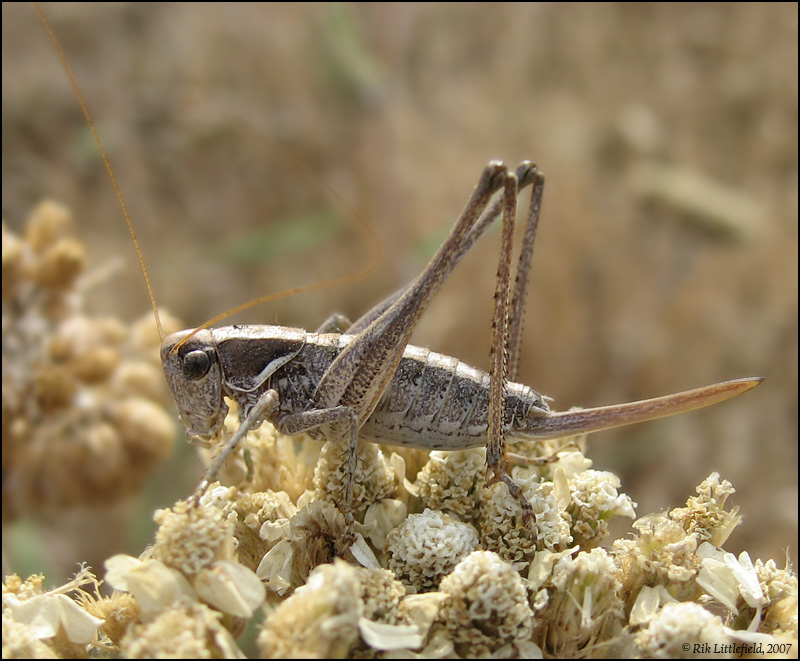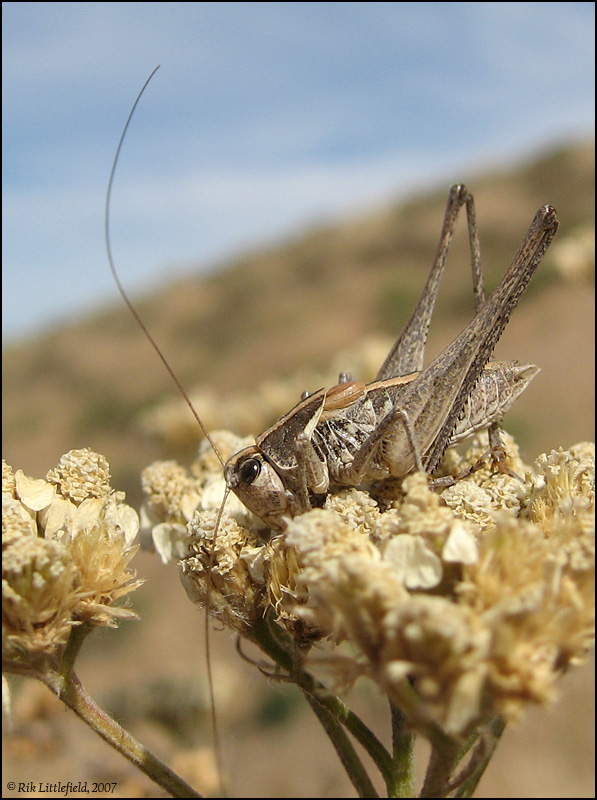

I thought you might like these pictures, but I can't tell you much about the subjects.
There were lots of these things on certain flowerheads today, by the side of a very dry hiking trail that goes up a nearby hill.
I do not know these insects. The best I can tell is that they are probably "Shieldbacked Katydids", subfamily Decticinae of family Tettigoniidae in the Orthoptera. They appear similar to what BugGuide.net indexes as genus Pediodectes.
I shot several pictures of these things, but I was particularly struck (interested? amused? ) by the antennae in these two. Apparently I caught the first one in mid-whip, and goodness knows what the second one was doing!
--Rik
Technical: Canon SD700 IS auto-everything. The jpg files report f/5.6 at 1/200 and 1/640 second. The first image, but not the second, has had some additional blurring of the background to improve bokeh and noise.
